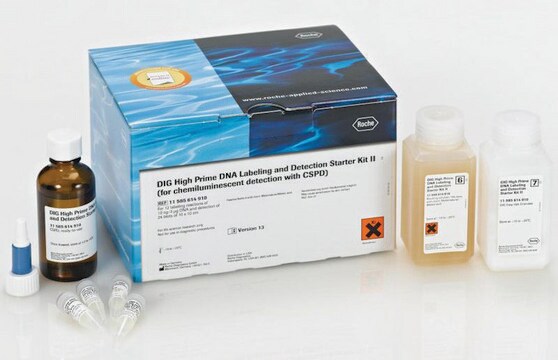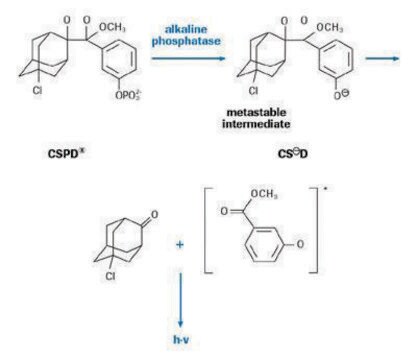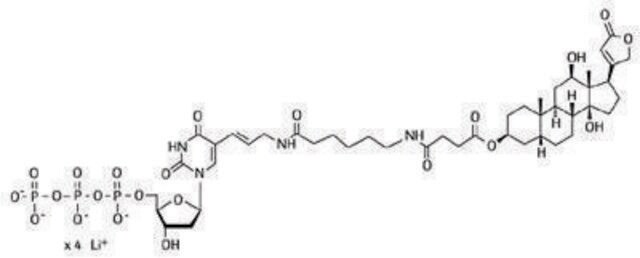Wichtige Dokumente
11175033910
Roche
DIG DNA Labeling Kit
sufficient for 40 labeling reactions, kit of 1 (7 components), suitable for hybridization
Synonym(e):
dig, dna labeling kit, dig
About This Item
Empfohlene Produkte
Verwendung
sufficient for 40 labeling reactions
Qualitätsniveau
Verpackung
kit of 1 (7 components)
Hersteller/Markenname
Roche
Grünere Alternativprodukt-Eigenschaften
Designing Safer Chemicals
Learn more about the Principles of Green Chemistry.
sustainability
Greener Alternative Product
Methode(n)
hybridization: suitable
Grünere Alternativprodukt-Kategorie
, Aligned
Lagertemp.
−20°C
Allgemeine Beschreibung
Spezifität
Anwendung
- All types of filter hybridization according to our standard protocol given in the pack insert of the special hybridization solution DIG Easy Hyb.
- Single-copy gene detection in total genomic DNA, even from organisms with high complexity, for example, human, barley, and wheat.
- In situ hybridizations
Verpackung
Qualität
Spezifikationen
Sensitivity and specificity: A single-copy human gene (tPA gene) is detected with a DIG-labeled probe in a Southern blot of 1μg digested human placenta DNA.
Prinzip
Note:
- The use of the alkali-labile form of DIG-11-dUTP enables easier and more efficient stripping of blots for rehybridization experiments with a second DIG-labeled probe.
- DNA probe, labeled with DIG-11-dUTP, alkali-labile must not be denatured using NaOH, but can be denatured by boiling in a waterbath.
Sonstige Hinweise
Nur Kit-Komponenten
- Unlabeled Control DNA 1 100 µg/ml
- Unlabeled Control DNA 2 100 µg/ml
- DNA Dilution Buffer
- DIG-labeled Control DNA 5.2 µg/ml
- Hexanucleotide Mix 10x concentrated
- dNTP Labeling Mixture 10x concentrated
- Klenow Enzyme, Labeling grade 2 U/µl
Lagerklassenschlüssel
12 - Non Combustible Liquids
WGK
WGK 1
Flammpunkt (°F)
does not flash
Flammpunkt (°C)
does not flash
Hier finden Sie alle aktuellen Versionen:
Besitzen Sie dieses Produkt bereits?
In der Dokumentenbibliothek finden Sie die Dokumentation zu den Produkten, die Sie kürzlich erworben haben.
Kunden haben sich ebenfalls angesehen
Artikel
Digoxigenin (DIG) labeling methods and kits for DNA and RNA DIG probes, random primed DNA labeling, nick translation labeling, 5’ and 3’ oligonucleotide end-labeling.
Unser Team von Wissenschaftlern verfügt über Erfahrung in allen Forschungsbereichen einschließlich Life Science, Materialwissenschaften, chemischer Synthese, Chromatographie, Analytik und vielen mehr..
Setzen Sie sich mit dem technischen Dienst in Verbindung.








